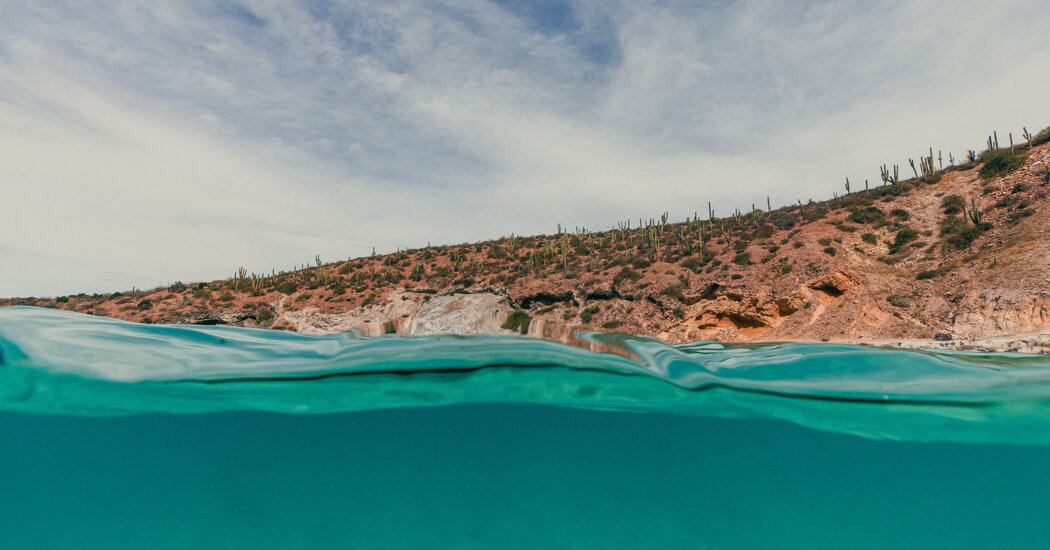
For our last night in La Paz, Mexico, we kept it simple: A couple of cans of cold Pacifico, a bench on the malecón, the city’s waterfront promenade, and the sunset glowing orange over the shimmering silver-blue Sea of Cortez. My husband, Alex, and I had spent nearly a week taking scenic desert drives and lazy city strolls, visiting stunning beaches and mountains, and enjoying a steady diet of fish tacos and mezcalitas. But now we were salt-coated and sinking into a blissful exhaustion that comes only after a day spent scuba diving.
La Paz is the capital of Baja California Sur, the Mexican state where some 42 percent of the land and water are natural protected areas, and the city lies on the Sea of Cortez, also known as the Gulf of California, considered one of the world’s most diverse marine environments. Travelers have long been drawn to the region’s glorious outdoors, a distinctive mix of ocean and red-hued desert, to spend days not only diving, but also sailing, kayaking, fishing, kite surfing, mountain biking, camping and hiking.
In recent years, the city has maintained its strong commitment to environmental conservation, but has also welcomed new restaurants and accommodations, meeting a growing desire among many travelers to Mexico for authentic experiences found beyond the walls of an enormous resort.
“This is an adventure destination,” said Luz Maria Zepeda, the director of the city’s tourism board. “We want people who want to explore, who want to preserve the environment the way it is, and to help us protect it.”
Growth, but kept in check
Home to around 300,000 people, La Paz has a decidedly laid-back feel — “The Peace,” it’s aptly named — and is often overshadowed by Los Cabos, a municipality on the state’s southernmost tip that includes San Jose del Cabo and Cabo San Lucas, as well as by tiny Todos Santos, a stylish destination for art and food on the Pacific Coast.





